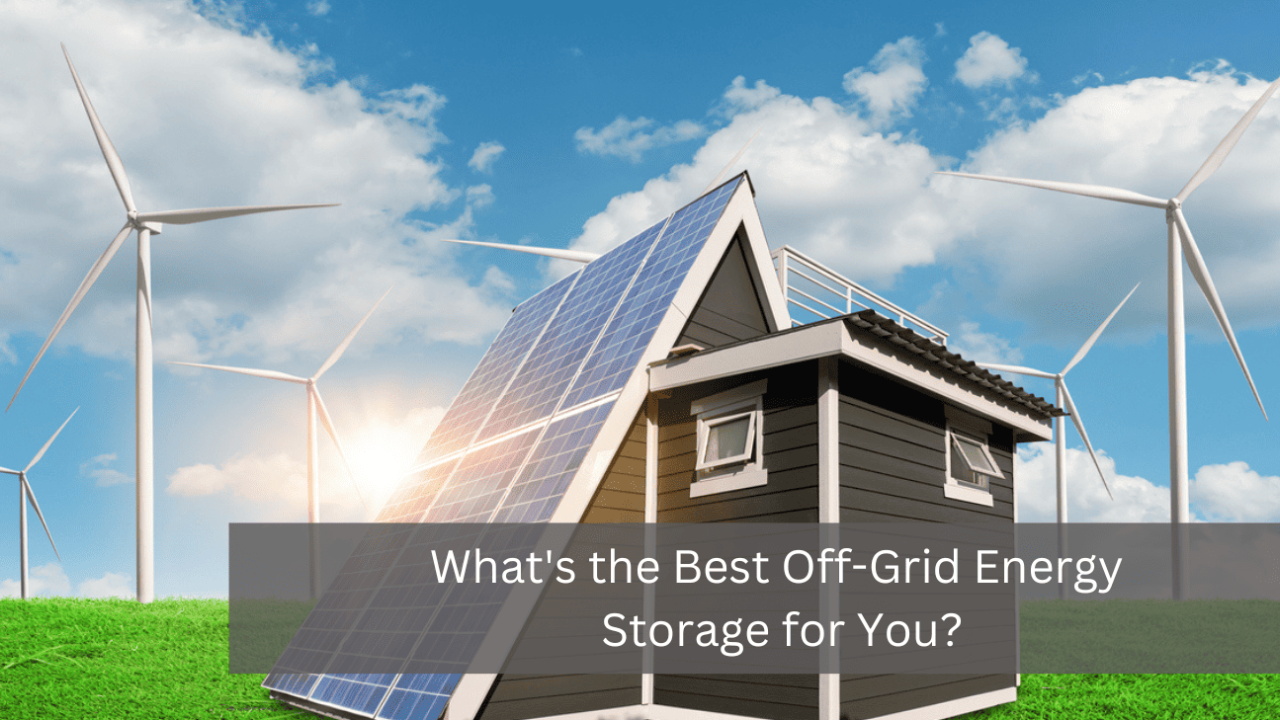
Living off the grid has become increasingly appealing to those seeking self-sufficiency, sustainability, and independence from centralized utilities. Remote areas often lack reliable access to electricity, making energy solutions critical for daily life. Off-grid energy systems combine renewable sources, storage, and backup power to ensure homes remain functional and comfortable. This guide explores the best options for powering off-grid homes, their benefits, and practical considerations.
What Is Off-Grid Living?
Off-grid living means residing in a home that is not connected to public utilities, relying on self-supplied energy, water, and sometimes waste systems. Energy is generated on-site through renewable sources or small-scale generators, and stored for continuous use.
Key elements include:
- Electricity Generation: Solar panels, wind turbines, hydro systems, or diesel generators.
- Energy Storage: Batteries or hydrogen systems store excess energy.
- Backup Systems: Generators provide power when renewable sources are insufficient.
Primary Energy Solutions for Remote Areas
1. Solar Power
Solar panels are the most common off-grid energy solution due to falling costs and reliability.
- Pros: Low maintenance, renewable, scalable.
- Cons: Dependent on sunlight, requires battery storage for nighttime use.
2. Wind Energy
Wind turbines harness wind to produce electricity.
- Pros: Complements solar power during cloudy days or at night.
- Cons: Site-specific, requires consistent wind speeds.
3. Micro-Hydro Systems
For properties near flowing water, small hydro turbines can provide continuous energy.
- Pros: Reliable and consistent energy output.
- Cons: Limited to locations with streams or rivers, higher initial cost.
4. Generators (Diesel or Gas)
Generators provide emergency or supplemental power.
- Pros: Reliable when renewables are insufficient.
- Cons: Fuel costs, noise, and emissions make them less sustainable.
5. Hybrid Systems
Combining multiple energy sources improves reliability and efficiency, such as solar paired with wind and battery storage.
Energy Storage Options
Energy storage ensures power availability when generation is low.
- Lithium-Ion Batteries: High efficiency, long lifespan, and compact size.
- Lead-Acid Batteries: Lower upfront cost but heavier and shorter lifespan.
- Hydrogen Storage: Emerging option for long-term energy storage with minimal emissions.
Tip: Oversizing storage capacity is key in remote areas to avoid power shortages during extended cloudy or windless periods.
Planning an Off-Grid Energy System
- Assess Energy Needs: Calculate total electricity usage for lighting, appliances, heating, and water systems.
- Evaluate Site Resources: Determine solar exposure, wind patterns, water flow, and backup fuel availability.
- Choose the Right Mix: Combine renewables and storage solutions to match energy demand.
- Professional Installation: Ensure proper system design, safety, and compliance with local regulations.
- Monitor and Maintain: Use monitoring systems to track energy production and storage levels.
Cost Estimates for Off-Grid Systems
| Energy Solution | Average Cost (USD) | Lifespan | Notes |
|---|---|---|---|
| Solar Panels | $10,000–$30,000 | 25+ years | Requires batteries for nighttime use |
| Wind Turbine | $15,000–$50,000 | 20+ years | Site-dependent, supplements solar |
| Micro-Hydro System | $20,000–$60,000 | 30+ years | Consistent output if water source is reliable |
| Battery Storage | $5,000–$20,000 | 10–15 years | Lithium-ion preferred for efficiency |
| Diesel Generator | $3,000–$10,000 | 10–15 years | Backup or supplemental energy |
| Hybrid System | $30,000–$100,000 | 20+ years | Combines multiple energy sources for reliability |
Benefits of Off-Grid Living
- Energy Independence: No reliance on utility companies or grid outages.
- Environmental Benefits: Renewable energy reduces carbon footprint.
- Cost Savings: Long-term savings after initial investment in self-sufficient systems.
- Self-Sufficiency: Increased control over energy, water, and lifestyle choices.
Challenges and Considerations
- High Initial Investment: Upfront costs are significant but offset by long-term savings.
- Maintenance Responsibility: Homeowners are responsible for system upkeep.
- Variable Energy Production: Weather and seasonal changes affect output.
- Space Requirements: Solar panels, turbines, or hydro systems need sufficient land.
Overview Table
| Feature | Description | Benefit to Homeowner |
|---|---|---|
| Solar Power | Photovoltaic panels generate electricity | Renewable and scalable energy |
| Wind Energy | Turbines convert wind into electricity | Complements solar, night-time or cloudy coverage |
| Micro-Hydro Systems | Small turbines generate power from water flow | Continuous energy in suitable locations |
| Battery Storage | Stores energy for later use | Ensures reliable power availability |
| Generators | Diesel or gas-powered backup | Provides emergency or supplemental energy |
| Hybrid Systems | Combines multiple sources | Maximizes efficiency and reliability |
Conclusion
Off-grid living offers independence, sustainability, and resilience, especially in remote areas. By combining solar, wind, hydro, storage, and backup systems, homeowners can create a reliable energy solution tailored to their property and lifestyle. While upfront costs are higher than grid-connected systems, the long-term benefits—both financial and environmental—make off-grid energy a viable choice for those seeking autonomy and clean energy.
3 Quick FAQs
- Can off-grid systems fully replace traditional electricity?
Yes, with proper planning, renewable generation, and sufficient storage. - Which renewable source is best for remote areas?
It depends on location; solar is versatile, wind and hydro are site-specific but highly effective. - Are off-grid systems maintenance-heavy?
Regular maintenance is required, but monitoring tools and professional support can simplify management.

